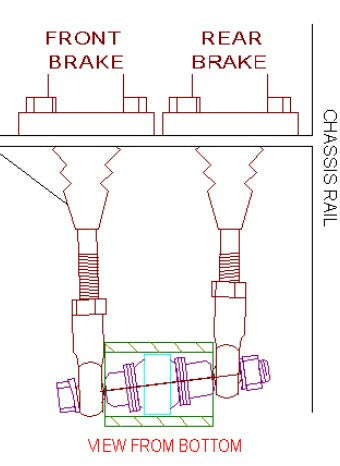
Understanding brake balance
BRAKE BALANCE Safety regulations require that racing cars, other than veteran or vintage, must have two separate brake systems so that in the case of a hydraulic failure, one system will remain operative - giving the driver some chance of reducing the intensity of the impending impact! There is an additional advantage in this, as it allows the driver to adjust the front/rear brake balance to suit conditions and driving style. For example, if the track becomes wet during an event, the driver can move the brake balance to the rear; thus reducing the braking on the front wheels which, due to lack of grip in the wet, will tend to lock since there will be reduced weight transfer. There is also the opportunity to adjust the brake balance to suit the driver's preference. It should be noted that, in dry conditions, although brake balance biased to the front tends to make the car feel stable under braking, brake balance should be set as far to the rear as the driver can tolerate as this will give the shortest stopping distance. This ensures that each tyre is giving the maximum braking effort that it can.

The balance bar system should be set up so that when the brake pedal is depressed to the position it adopts under heavy braking, it and the balance bar are at right angles to both push-rods - in both planes. This is achieved by adjusting the push-rod lengths - care is needed to ensure that adequate push-rod thread length remains in each clevis. This gives maximum efficiency of the mechanical operating system.
The fact that in this condition and with the brake released, the brake pedal in its 'off brake' position, the balance bar does not make right angles to the push-rods, is quite acceptable. This occurs because, generally speaking, the front calipers are larger than the rears and therefore more fluid is used to generate the required braking force, hence there is greater master cylinder travel at the front.


